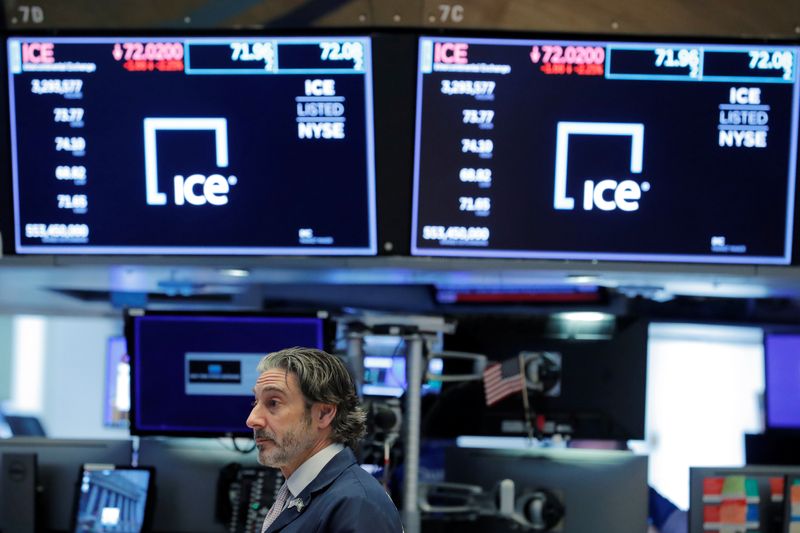By Manya Saini
(Reuters) - Intercontinental Exchange (NYSE:ICE) beat Wall Street estimates for second-quarter profit on Thursday, as the New York Stock Exchange's owner benefited from choppy global markets that led to a surge in trading volumes, sending its shares up over 4%.
Investors actively rejigged their portfolios to hedge against potential risks amid rapidly rising rates and decades-high inflation.
The volatility and uncertainty in energy markets triggered by the war in Ukraine drove global gas trading volumes 31% higher so far this year, sparking a 49% growth in the exchange's North American gas business in the second quarter.
GRAPHIC: ICE Exchange - Total Futures & Options ADV (https://graphics.reuters.com/ICE-RESULTS/akpezkzdrvr/chart.png)
Atlanta-based ICE added that it expects heightened concerns tied to the war and the reshaping of the global energy supply chain to also drive demand for its risk management tools.
"We are well positioned to benefit from both the near-term volatility and the long-term secular growth trends occurring across these markets," said Benjamin Jackson, ICE's president, in a call with analysts.
On an adjusted basis, ICE net income rose 12.4% to $739 million, or $1.32 per share, in the quarter ended June 30. Analysts on average were expecting the company to report a profit of $1.27 per share, according to Refinitiv IBES data.
ICE, which runs futures and equities exchanges as well as clearing houses, data services and a mortgage software business, saw revenue from its biggest exchanges segment rise 20% to $1.6 billion during the quarter.
The results round out an upbeat second-quarter for U.S. exchanges, as market turbulence drove up trading volumes.
Total revenue, excluding transaction-based expenses, came in at $1.81 billion, above analysts estimates of $1.80 billion.

Through the quarter, ICE said it repurchased $632 million of its common stock and paid $427 million in dividends to shareholders.
In line with peers, the exchange saw expenses climb 4.1% to $945 million, above its previous outlook of $900 million to $910 million.